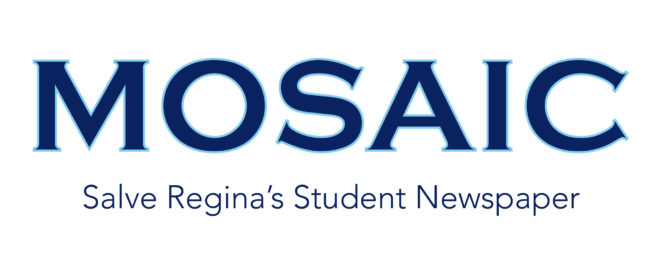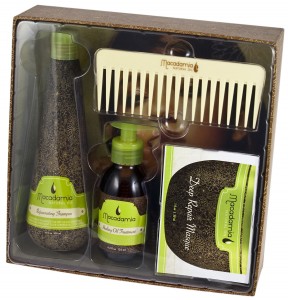By Quisan Taylor-Lawhon;
Mosaic Staff Writer–
It has only been two weeks since you’ve left home. You packed up all your clothes, supplies, and some food and now your four walls are shared with a roommate or three. Now the second weekend is here and your mind can’t think of what else to do. Every scarf has been twisted and wrapped, the pin ups aren’t holding and the ponytails expose all the fried ends of your hair. Nothing seems to last.
Looking online and to your friends for suggestions, you can easily get swept up into the go natural revelation or the fake hair route. No one is helping young black women keep and maintain healthy relaxed hair. Why not? The lack of helpful advice stems from the new awareness of history of African-American hair. Going all the way back to slavery, the hair of slaves were no sign of beauty to their white slave masters.
In an article by Cheryl Thompson entitled “Black Women, Beauty, and Hair as a Matter of Being”, she exposes how negative the slave’s hair was viewed by their oppressors. Because the white Europeans called slave’s hair “unattractive” and “inferior”, slaves lost pride and love for their naturally curly thick hair. Highly influenced, “house slaves” began covering their hair with straight hair wigs styled like their masters.
From the wigs launched various efforts to “fix” Afro-ethnic hair. In the 1900s Madame C.J. Walker created the first hair softener and the straightening comb. And just like that, the African-American hair industry exploded! In another Thompson article, “Black Women and Identity: What’s Hair got to do with it?”, Thompson writes that in the 1960s, the first chemical straightener; more commonly known as the relaxer was made by George E. Johnson.
These efforts by Walker and Johnson simply expanded Afro-ethnic hair options; relaxed hair is not oppressed hair. Young African-American women, like you, love your relaxed hair. By not supporting your hair choice many women end up limiting their options and revert to going natural or using synthetic hair. Young women, like you, shouldn’t get caught up in the crowd and yes you can have healthy, shiny, strong hair and here’s some advice to get there.
1. For Relaxers: Go to the salon don’t go home
You see the small boxes in the stores all the time. Each DIY relaxer has attractive women rocking a shiny straight hair-do. As you remember your hair “don’t” on the top of your head it’s easy to pick-up the box and walk out the store. For less than $20, your hair can be just like the model’s hair, right? Wrong. The model had a professional team of four or five working to make her hair “just right” for the ad. At home you are a team of one – just you.
Though reading directions isn’t the problem – your eyes are fine – it’s the professional hair training you lack. From Ki Ra Salon, Level-3 professional stylist, Yvonne, describes how the time component to relaxing the hair is a huge factor between the success rates of DIY and salon relaxers. Yvonne goes on to say, “You know that if a professional is doing it [applying and monitoring relaxer] you’re not going to end up with abrasions or any type of skin irritation.”
Yvonne says the most common problem is that women don’t take the time constraint serious. In an attempt to make the straightener effects last longer – more weeks of straight hair – women end up over-processing and burning the scalp by leaving the straightening cream on the scalp too long. Going to the salon means you have a trained hair stylist paying attention to your hair type and the time.
All this responsibility cannot be placed on the on the stylist alone. It’s up to you to determine and discuss how straight or textured you want your hair to the stylist. Yvonne adds that they need to know how they care for their hair at home, if any color is in or has been in the hair and if heat is used – flat iron, curler, blow dryer. All these elements are a factor for stylist when picking the type of relaxer for your hair. A consultation before any parts are made in your hair is best, especially if it’s your first salon relaxer.
2. Condition, Condition, Condition – put back what you lost
Leaving the salon doors your shiny hair-do is glowing, wavy – almost alive, but before the week’s up your hair is dull and the softness can’t be found. Why? In the Journal of Cosmetic Dermatology, the article, “Protective Effect Of Conditioning agents and Afro-ethnic hair”, explains that, “…straightening agents cause considerable damage to hair, for instance, making it dry and brittle.” You must replenish the protein that was removed by the chemicals in the relaxer with deep conditioners, leave-in conditioners and oils.
We all know that you condition after you shampoo, but have you ever just rinsed and conditioned? This new routine removes the salts built-up in the hair from sweat and boosts the lackluster hair. Often times extra heat – flat/curling iron, or blow dryer – is put on the hair to reach certain hairstyles. Though the hair responds positively initially it’s up to you to put back all the protein before it’s too late.
In the International Journal of Cosmetic Science the article, “Effects Of Thermal Treatments With A Curling Iron On Hair Fiber”, describes how conditioner improves the life appearances of thermal treated dry hair fibers. Conditioners get the hair to look and microscopically be healthier. Using deep conditioners, during the dryer/colder seasons, weekly and leave-in conditions a few times a week will repair and keep away “split-ends”. Very little to no split-ends decrease the amount of damaged hair, so little needs to be trimmed off.
Using oils on the scalp and tips of the hair is an effective way to eliminate dryness and breakage. In a U.S. Patent by Lanita Jones, discusses an oil-based scalp treatment composition, the vegetable and mineral oil mixture and how it restored moisture to the dry areas of scalp. The patent goes on to say that if heat is applied by sitting under a hair dryer the oils’ effects last longer. Though the patent refers to a vegetable and mineral based oil the popular argon, Shea, Aloe Vera and olive oils are best for relaxed hair.
3. Demand for clean air, water, food – and Hair Care
In your collection of hair products, how many are natural? Natural doesn’t mean homemade “oatmeal recipies”. A natural product means a toxin-free product. Many young women aren’t aware of toxic-free products is an option. Founder and Editor-in Chief of Organic Beauty Talk, Brandie Gilliam, shares her reaction after hearing about the “Terrible Touch-Me-Nots” or toxic ingredients listed on the back of hair products. “Nobody ever said read an ingredient label on your product.” So with the news Gilliam turns to her own collection of hair products. She laughs and recalls how she had nothing left after her inspection.
The toxins are that common. From Gilliam’s website she lists the “Terrible Touch-Me-Nots” and from this list many young women can hold up their bottles and see if something as innocent as, fragrance, is listed. The effects of this ingredients alone are reported to cause dizziness, headaches, and even vomiting. Remember, what you put on your head effects your whole body.
The FDA regulates our foods and drugs but ever since 1938, according to Organic Beauty Talk, the cosmetic companies are self-regulated. The best way to not be fooled by popular brands is to look elsewhere. By looking for products that say natural, organic, and chemical-free you can stop subjecting your body to poisons.
Gilliam explains that at the beginning of her toxic-free “journey” it was difficulty to find natural products, but nowadays natural is more popular than ever. In stores the natural products are sitting right beside all the “others” and it’s you the shopper that must look for the healthier option. There’s no excuse not to buy natural products, particularly when the prices are the same as the popular toxic brands.
As a young woman with relaxed hair your future isn’t determined by the past. You can grow healthy relaxed hair. It’s like what Gilliam calls “a journey” to discovering what works best for your hair, lifestyle and most importantly how to get and keep it.













